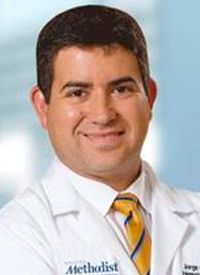Telehealth Is Poised for a Post–COVID-19 Future
During the COVD-19 pandemic, the expansion of covered services for telehealth by the Centers for Medicare & Medicaid Services and private insurers has provided a safer alternative for patients and physicians.
Brian Koffman, MDCM

Prior to the coronavirus disease 2019 (COVID-19) pandemic, the use of telehealth was limited by geographic and provider restrictions. During the pandemic, the expansion of covered services for telehealth by the Centers for Medicare & Medicaid Services (CMS) and private insurers has provided a safer alternative for patients and physicians.
Now it appears that telehealth and virtual care are here to stay. In December 2020, CMS permanently expanded some telehealth services. More than 60 services that will continue to be covered post pandemic have been added to the Medicare telehealth list, although not all the services on the expanded list apply in the area of oncology1,2 (TABLE1). Importantly, however, CMS reimburses Medicare telehealth services at the same payment rate as those administered in person, according to a CMS spokesperson.
Before the pandemic, approximately 15,000 Medicare beneficiaries participated in telehealth visits each week. At that time, CMS generally limited telehealth usage to patients living in rural areas or in those designated as Health Professional Shortage Areas (HPSAs). In March 2020, shortly after the pandemic began, CMS broadened access to telehealth so that all beneficiaries could receive a wider range of services.3 Between mid-March and mid-October 2020, at least 24.5 million of 63 million Medicare enrollees participated in telehealth.1
Telehealth usage for patients covered by private payers skyrocketed as well. A FAIR Health analysis showed an almost 3000% increase in telehealth claims from November 2019 to November 2020, up from 0.20% of medical claims to 6.01%.4 FAIR Health’s database includes more than 32 billion privately billed medical and dental claim records from more than 60 contributors nationwide.
So far, however, private insurers have not made public their plans post pandemic. During the height of the public health emergency in early 2020, many private insurers expanded coverage for telehealth visits and waived patient coinsurance and cost sharing for them. Now it seems that insurers are subjecting these visits once more to copayment and coinsurance requirements.5
Aetna, for example, began charging co-pays again for in-network primary care telehealth visits and behavioral health visits starting February 1, 2021.6 UnitedHealthcare and Anthem reinstated copays for some services on October 1, 2020. Additionally, UnitedHealthcare covers COVID-19 testing-related telehealth visits, with no cost sharing through the end of the public health emergency, but not telehealth visits for COVID-19 treatment or nonCOVID-19 treatment.7
Still, the shift to telehealth brought about because of COVID-19 is seen as a positive development, providing a convenient experience for both patients and providers.
“We are not going back to business as normal. The COVID-19 pandemic has changed things forever,” said Brian Koffman, MDCM, during a presentation at the 25th Annual International Congress on Hematologic Malignancies® in February 2021. “COVID-19 has served as a catalyst to a safer, more efficient, and more patient-centric experience through increased telehealth options,” said Koffman, who is the cofounder, executive vice president, and chief medical officer of the CLL Society.8
TABLE. Telehealth Services Reimbursed by Centers for Medicare & Medicaid Services2

Telehealth During the Pandemic
Patients with cancer and their physicians have had positive experiences with telehealth, according to a recent study of 1 center’s experience.9 Of the 1762 patients with cancer at Houston Methodist Cancer Center, 1477 (83.8%) chose a telehealth over an in-person visit. Patients were more satisf ied with telehealth visits than physicians: 92.6% of patients surveyed said they were satisfied with video visits, and 54.8% said they were interested in having all or most of their visits be telehealth in the future.
The telehealth visits took place early in the pandemic, in March and April 2020, after which investigators conducted follow-up surveys. Most patients (92.6%) who completed the survey were satisfied, and 83.4% of these were very satisfied.
Among physicians, 65.2% were satisfied or very satisfied with the visits, and 43.5% said they were highly like to continue telehealth visits for established patients post pandemic. Another 30.5% said they were somewhat likely to use video visits for established patient visits.
Prior to COVID-19, almost 100% of Houston Methodist Cancer Center’s 40,000 ambulatory visits were in person, said lead study author Jorge Darcourt, MD, the medical director of the Methodist Sugar Land Infusion Center in Sugar Land, Texas.
Jorge Darcourt, MD

Within 2 weeks of initiating telehealth efforts through its MyChart video platform, Houston Methodist started offering a telehealth alternative at its 7 Greater Houston area cancer centers.
“Physicians were more comfortable doing follow-up visits with patients than first encounters,” Darcourt said in an interview. The physician satisfaction level was lower than that of patients, partly due to the lack of physical exams. Doctors were concerned about missing significant clinical findings, a decreased quality of care, and potential medical liability.
Younger physicians were generally happier with telehealth than older physicians, Darcourt said. The physicians missed the patient connection and interaction, as well as wanting breaks from the computer.
“When you’re booked for telehealth visits for 4 hours or the whole day, you’re isolated,” he noted.
Andrea B. McKee, MD, a partner at Radiation Oncology Associates and the chief of radiation oncology at Lahey Hospital & Medical Center Sophia Gordon Cancer Center in Burlington, Massachusetts, said there are visit types that are suitable for telehealth. Surveillance visits or a visit to review a CT scan may be appropriate for telehealth. Talking with a patient about treatment options or having a postsurgical discussion are also good uses for telehealth, especially when the patient’s family wants to join in from other locations.
Andrea B. McKee, MD

“Telehealth can also be really helpful for second opinion consults,” McKee said. Telehealth offers patients an opportunity to seek consultations in other cities and locations, especially when considering clinical trials for which they might be a candidate. Darcourt said that because of telehealth, he recently could offer a second opinion to a patient in Nigeria. “That’s a great advantage, and that won’t go away [after the pandemic],” he pointed out.
But McKee’s staff also have experienced operational challenges. The nurses typically complete a full intake prior to her conversation with the patients. “Operationally, that can be a challenge,” she said. “The nurses spend more time trying to get a hold of patients on the phone to do an initial intake.”
That means offloading other responsibilities. Some patients need phone calls, as they don’t have computers or cell phones, or aren’t computer literate.
Pontchartrain Cancer Center in Covington, Louisiana, has also found success using telehealth visits for treatment education visits, prior to initiating any type of therapy.
“We’re seeing higher patient satisfaction and a little bit ease of stress on the patient when we are able to dial in family members or the caregiver at their job for those kinds of visits,” said Kathy W. Oubre, MS, the chief executive officer at Pontchartrain Cancer Center and a member of the Community Oncology Alliance board of directors.
Telehealth Going Forward
According to Darcourt, at the peak of the pandemic up to 65% of visits were telehealth; now it’s at 20% for his system. That’s because the clinicians are more familiar with the virus and safety measures. They have not developed a specific telehealth policy for the future, but it will be physician- and patient-driven. Some patients ask the physicians if they can do a video call for their next appointment.
Telehealth will be especially helpful for patients who live farther away and those with transportation issues. Sometimes after a toxicity check from chemotherapy, Darcourt suggests alternating with a telehealth visit if the patients are doing well.
When the pandemic ends, Houston Methodist will likely continue offering telehealth, although the conditions might change somewhat, Darcourt noted. Reimbursement models, the process of onboarding patients and physicians, and implementing technology and practice solutions will all affect its success.
“We’ll keep offering telemedicine to our patients. It’s here to stay,” Darcourt said.
McKee’s facilities have also not yet developed a policy. “Right now, we’re still navigating the pandemic. Hopefully that will be our next phase, once we have the luxury to deal with that,” she said.
In the meantime, federal legislation is beginning to move forward in the area of telehealth. For example, in February 2021, several senators reintroduced legislation to increase access to telehealth to Medicare beneficiaries.10 Introduced by Tim Scott (R-SC), Brian Schatz (D-HI), and Jeanne Shaheen (D-NH), The Telehealth Modernization Act would make changes to ensure that coverage for telehealth would be permanent after the public health emergency ends.
The act would protect access to telehealth in rural areas and remove restrictions limiting telehealth to doctors’ offices. The legislation, if passed, would also give the US Secretary of Health and Human Services authority in the area of telehealth.
For commercial insurance and telehealth, state laws are trending toward equitable treatment of telehealth. This means providers would receive the same reimbursement for service whether delivered by telehealth or in person, according to a recent report by the legal firm Foley & Lardner LLP.11
Currently, 43 states and the District of Columbia have some type of telehealth commercial insurance coverage law; 1 state, West Virginia, enacted such a law in 2020. But the laws vary in terms of coverage and reimbursement.
At present, 22 states have laws addressing the reimbursement of telehealth services, an increase from 16 in 2019; 14 of those states offer “payment parity” for telehealth or office visits, an increase from 10 in 2019.
In addition to these 14 states, Massachusetts has temporarily extended payment parity for primary care and chronic disease management services via telehealth over the next 2 years. The state has also expanded payment parity for other health care services, which the governor has temporarily mandated, for 90 days beyond the end of the COVID-19 state of emergency.
References
- Trump administration finalizes permanent expansion of Medicare telehealth services and improved payment for time doctors spend with patients. News release. CMS. December 1, 2020. Accessed March 2, 2021. https://go.cms.gov/3r9n8xt
- List of telehealth services. CMS. Updated March 9, 2021 Accessed March 2, 2021. http://go.cms.gov/3sJv4FT
- Medicare telemedicine health care provider fact sheet. CMS. March 17, 2020. Accessed March 2, 2021. https://www.cms.gov/newsroom/fact-sheets/medicare-telemedicine-health-care-provider-fact-sheet
- Monthly telehealth regional tracker, Nov 2020. FAIR Health. Accessed March 2, 2021 https://bit.ly/3r9016g
- Private payers: telemedicine and telehealth. American Society of Clinical Oncology. Updated March 3, 2021. Accessed March 2, 2021. https://bit.ly/3cUk28V
- Aetna helps members access COVID-19-related care through new and extended waivers. News release. CVS Health. December 14, 2020. Accessed March 2, 2021. http://bit.ly/2Ph9pXd
- Talk to a doctor from home using telehealth services. United Healthcare. Accessed March 2, 2021. http://bit.ly/3b6Wmjx
- Koffman B. Telemedicine in the future. Presented at: 25th Annual International Congress on Hematologic Malignancies®; February 25-28, 2021.
- Darcourt JG, Aparicio K, Dorsey PM, et al. Analysis of the implementation of telehealth visits for care of patients with cancer in Houston during the COVID-19 pandemic. JCO Oncol Pract. 2021;17(1):e36-e43. doi:10.1200/OP.20.00572
- Scott, Schatz, Shaheen introduce bipartisan legislation to increase access to telehealth in the midst of the pandemic. News release. Senator Tim Scott. February 23, 2021. Accessed March 2, 2021. http://bit.ly/3b88O2A
- Lacktman NM, Acosta JN, Iacomini SJ, Levine SJ. 50-state survey of telehealth commercial insurance laws. Foley & Lardner LLP. February 9, 2021. Accessed March 2, 2021. https://www.foley.com/en/insights/publications/2021/02/50-state-telehealth-commercial-insurance-laws




